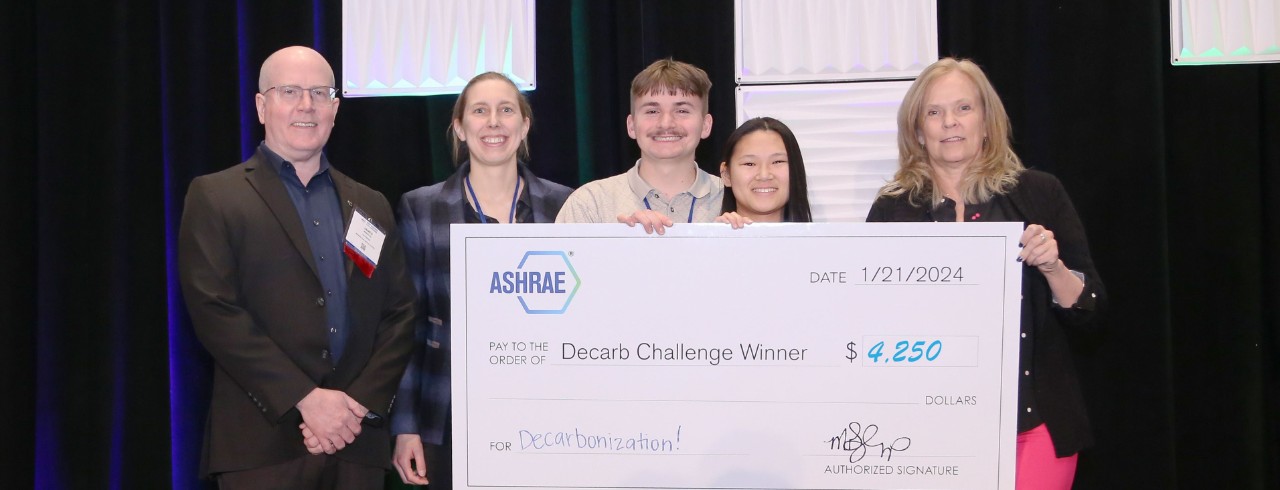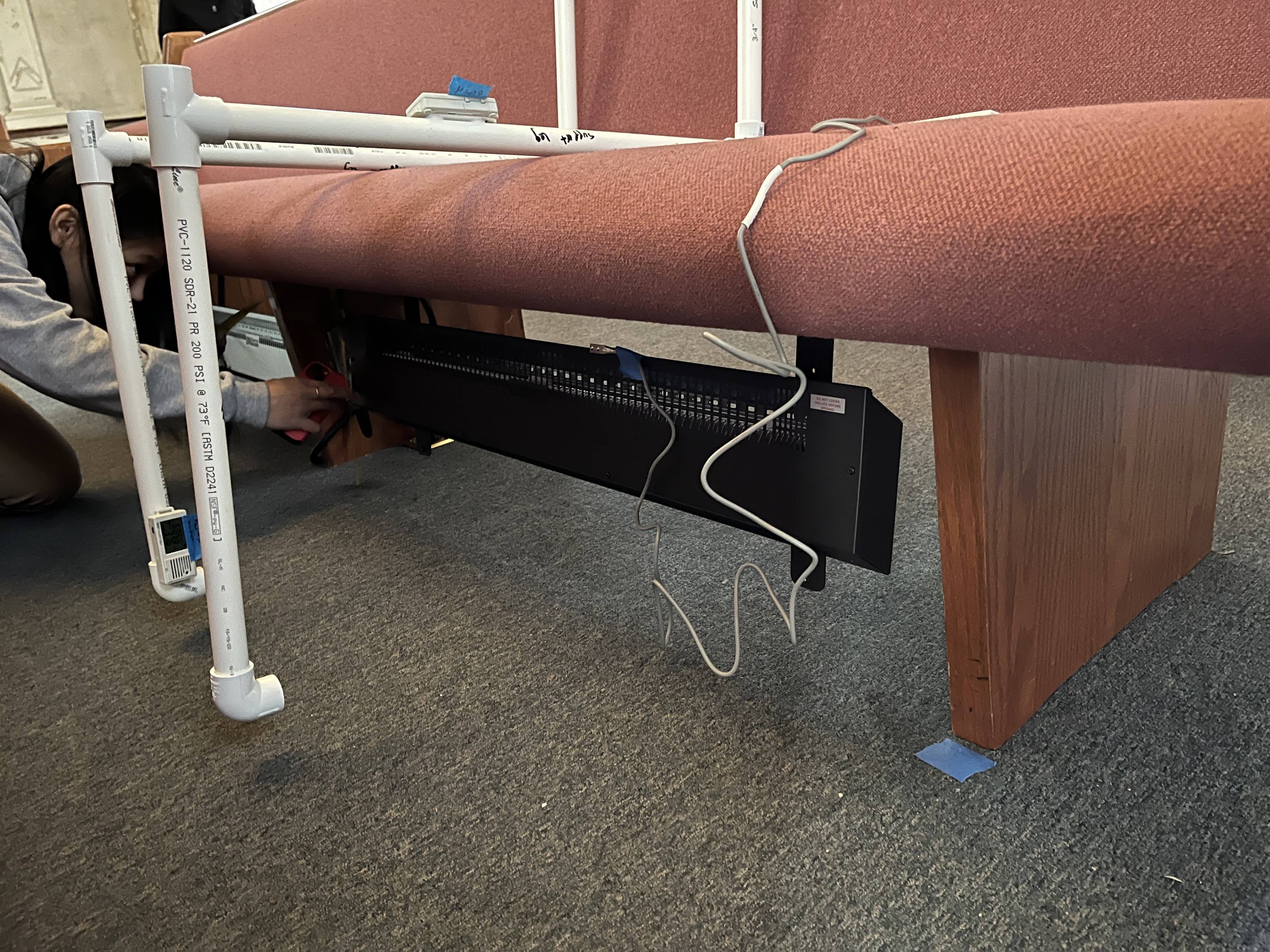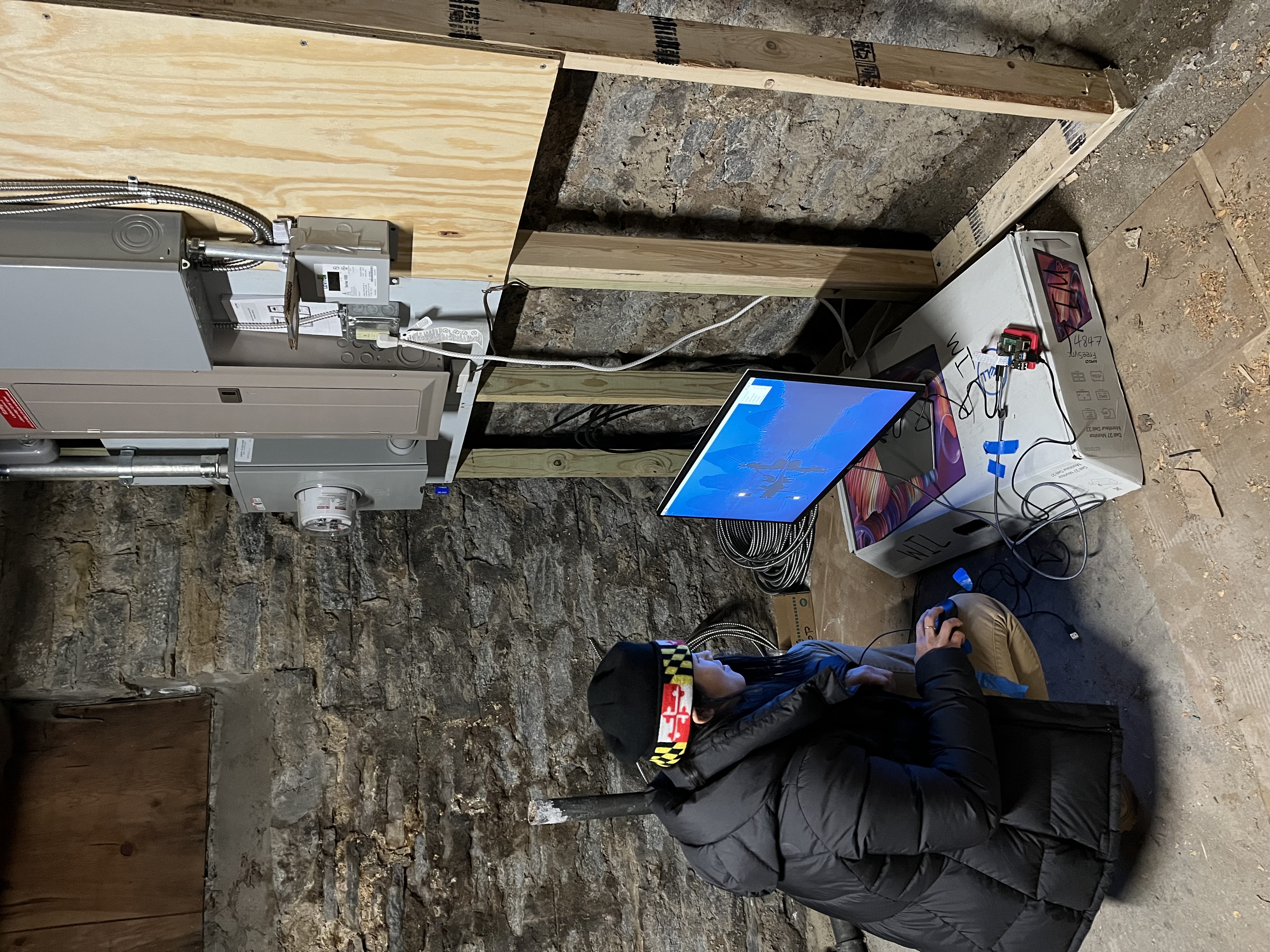
UC ASHRAE chapter wins decarbonization grant
Students work to improve energy efficiency in Cincinnati
University of Cincinnati engineering students have partnered with a local sustainability organization, Faith Communities Go Green, to improve energy efficiency in a Cincinnati church.

Amanda Webb, associate professor of architectural engineering, teaches the AE 5147/6047 course, Building Energy Audits and Data Analytics. Photo/CEAS Marketing
Civil and architectural engineering students are using the data gathered from an energy audit to transform energy use in the church. This project is funded by a grant from ASHRAE, a global society of heating, refrigerating, and air-conditioning engineers.
Through the Building Energy Audits and Data Analytics course taught by Amanda Webb, associate professor of architectural engineering at UC's College of Engineering and Applied Science, students learn how to perform energy audits of buildings. An energy audit an evaluation of the ways energy is currently used in a building and the identification of strategies for reducing energy use and costs. In the course, students get the chance to go out in the community and perform audits that can provide important insights about energy use, costs, and environmental impact to building owners.
During the academic year, Webb's students performed audits of two Cincinnati churches, including one that was historic, the results of which stuck out to Webb and her students.
"In the church, we found that 80% of their energy use, amounting to nearly 60% of their energy costs, were being used on heating the large sanctuary space," Webb said.
After this discovery, Webb and her students had an idea. If If the church employed localized heating, they could significantly cut down on energy costs. Unexpectedly, the opportunity for the students to put their idea into practice presented itself.
In the fall of 2023, the President of ASHRAE announced a competitive, one-year grant for Young Engineers in ASHRAE called the Decarbonization Challenge. This challenge, as part of the organization's president's initiative of tackling the climate crisis, would fund a select number of implementation projects that focused on decarbonization.
“Our suggestion for the church was focused on decarbonization, so we decided to apply for the grant to take our idea a step further from our classwork and actually complete this project,” said Jessica Burke architectural engineering graduate, class of 2024, and member of the ASHRAE challenge team.
At the ASHRAE winter conference in January 2024, the group found out their grant proposal was selected — one of only nine chosen nationwide.
The implementation project centers on the installation of localized heating through pew heaters. Many old churches have tall ceilings with with empty space above where the people are congregated. The UC students theorized that by heating the people in the church, instead of the entire space, energy usage and costs will significantly decrease.
Everything I've been able to do through ASHRAE has been really rewarding
Quinn Graessle, civil engineering graduate, class of 2024
"If you heat the air in the space, the people will be warm," said Joe Tornes, Cincinnati ASHRAE chapter chair of student activities and UC alumnus. "But heat rises, and if you're heating the air, most of the heat goes up and into the area where there are no people and it's a big waste of energy."
The idea of localized heating is common practice outside of the U.S. and has been growing steadily over the last several decades. In the U.S., however, this is not being done — and the student project is revolutionary for the area. While this presented a great opportunity for the students, it also presented them with many challenges. For instance, since this type of heating system is not used in the U.S., they had to find and order the heaters from overseas, a process that is filled with unknowns. Additionally, once the team set out to start the implementation, they had to address a key component that was missing, the church they partnered with did not have pews. Luckily, the team was able to find unused pews at a different church and bring them over. The team also faced a time constraint.
"It's a much quicker timeline than typical projects. We found out in January that we were chosen for the grant and had until June to complete it, collect data, and present our results," Burke said. "It's also been interesting to compare our ideal situation to the reality through this project."


Heaters are installed under the church pews, left. At right, UC graduate Jessica Burke measures energy usage data in a Cincinnati historic church. Photos/Provided
Not only were they working under the time constraint of ASHRAE, but they also had to collect enough data before heating season ended in late April to early May. Despite the challenges they have faced, the team is persevering through this project. It’s not every day that students get the opportunity to put a classroom idea into practice and potentially make a real difference in the community.
"Everything I've been able to do through ASHRAE has been really rewarding," said Quinn Graessle, civil engineering graduate, class of 2024. "It's cool to be connected to something really focused on energy efficiency, what I'm passionate about."
In March, the team installed the heaters and conducted several tests. The heaters were programmed to turn on at the start of the service to heat the pews and turn off automatically once the service concludes to save energy. After doing this for several weeks, the data gathered by the team showed that energy consumption was reduced significantly. However, the heaters did not consistently reach the desired temperature. The team is working to make improvements and remains optimistic about the outcome.
This summer, the UC ASHRAE team presented the project at the annual ASHRAE conference. Graessle participated in a Q&A panel with grant recipients from other chapters and was able to share the team's original idea, the lessons they learned, and gain inspiration from others. Additionally, the team shared the results at the 2024 Midwest Regional Sustainability Summit, and Graessle shared that the project and results thus far will be presented in a conference paper at the 2025 ASHRAE winter conference.
Featured image at top: UC ASHRAE members pictured with the organization president. Photo/provided.
Related Stories
Engineering students showcase capstone projects at CEAS Expo
May 6, 2022
Graduating engineering undergraduates from the University of Cincinnati’s College of Engineering and Applied Science gathered for the inaugural CEAS Expo in April to showcase their senior capstone projects to more than 500 attendees, including faculty, staff, alumni and industry representatives. The event, organized by the college and CEAS Tribunal student government, was held in downtown Cincinnati at the Duke Energy Convention Center.
Engineering students present at third annual Expo
April 24, 2024
This spring, senior students at the University of Cincinnati's College of Engineering and Applied Science came together to present their final capstone projects at the third annual CEAS Expo. College faculty, staff, alumni and industry professionals attended the event to witness the innovation that is created at CEAS.
